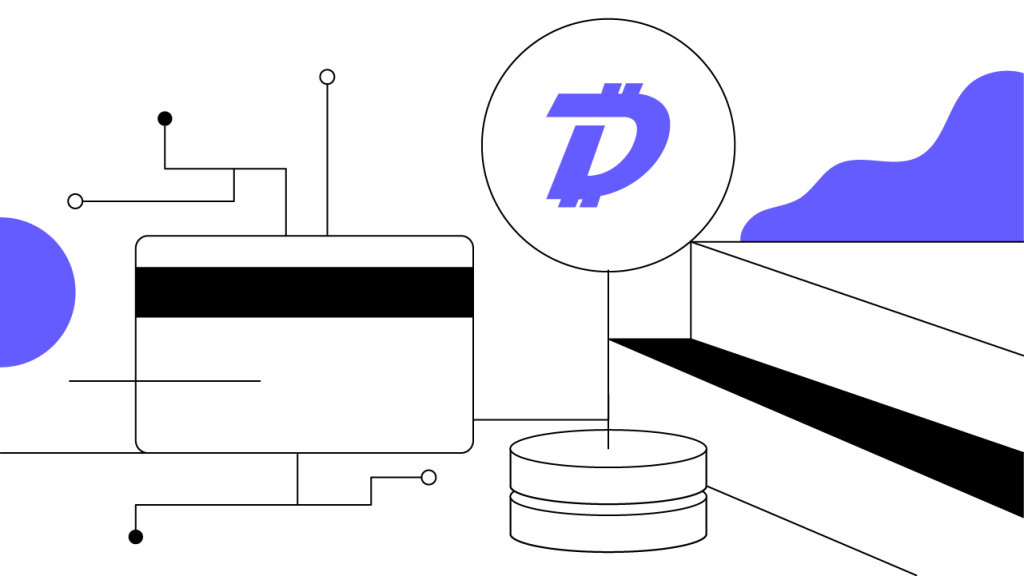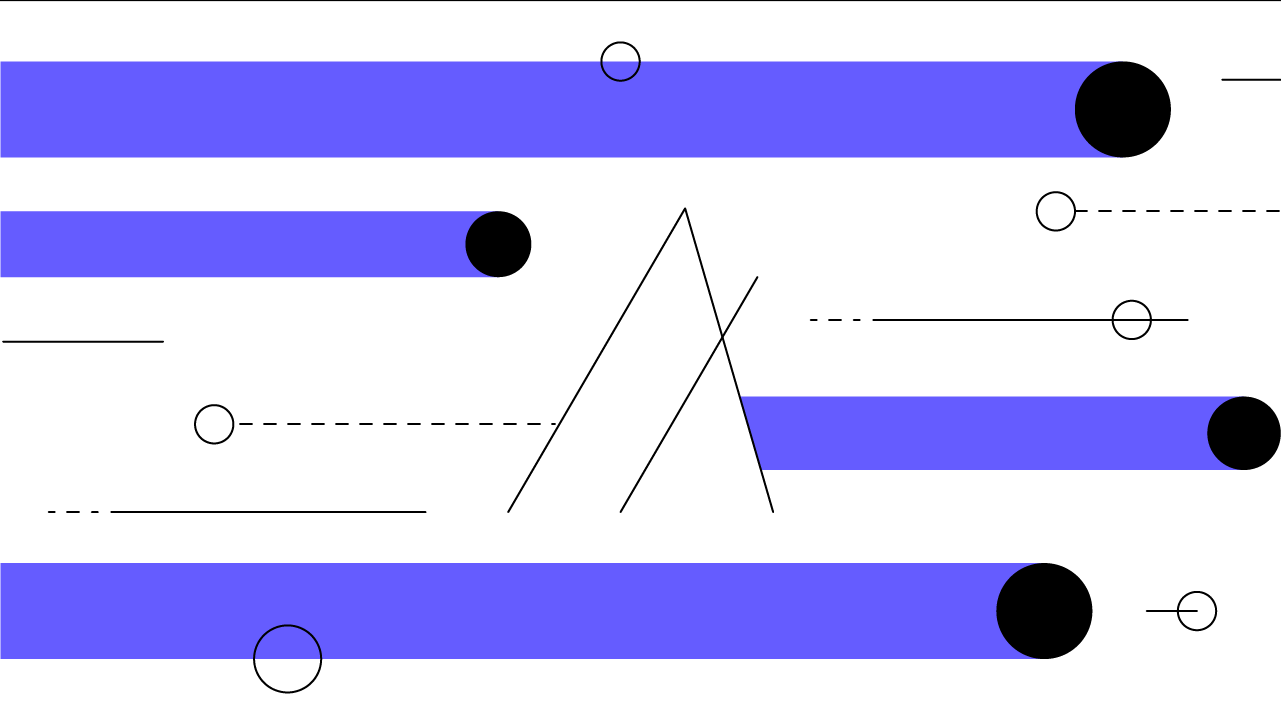Contents
DigiByte: A Payments and Digital Assets Network
DigiByte is designed to serve both as a decentralized payments network and as a broader blockchain ecosystem of digital assets, smart contracts, and dApps.
Updated December 3, 2021 • 6 min read

Summary
DigiByte was founded on the belief that leading blockchains like Bitcoin and Ethereum are not secure or scalable enough in terms of supporting day-to-day value transfers and other mass-market user requirements. As a result, DigiByte is designed to serve both as a decentralized payments network and as a broader ecosystem of decentralized applications (dApps). DigiByte’s blend of speed and security make it uniquely suited for applications like digital identity verification and digital asset creation/distribution. The network runs on an innovative Proof-of-Work (PoW) consensus mechanism, and its native cryptocurrency, DGB, is used as fuel to power the network.
DigiByte Seeks Improvements on Past Successes
Launched in 2014, DigiByte (DGB) is a blockchain network built from the same underlying code as Bitcoin and Litecoin, with several significant modifications geared toward improving scalability and security. The project was founded by Jared Tate, a blockchain veteran who modeled DigiByte as a fusion of both Bitcoin and Ethereum. As a result, DigiByte is designed to serve not only as a decentralized payments network — similar to Bitcoin’s focus — but also as a broader ecosystem capable of supporting a wide range of digital assets, smart contracts, and decentralized apps (dApps) — similar to Ethereum’s focus. DGB coin is Digibyte network’s native cryptocurrency. It is used as fuel to power the network’s transactions and overall Proof-of-Work consensus mechanism.
DigiByte aims to provide a faster, more scalable, and more secure network than other comparable blockchains — Bitcoin, Litecoin, and Ethereum in particular. In an effort to achieve this goal, the Digibyte project has notably introduced several blockchain enhancements that have since been implemented in other notable blockchain projects. For instance, DigiByte was the first major blockchain to adopt Segregated Witness (SegWit), a first-layer solution that modifies the structure of transaction blocks in a way that enhances overall network scalability. And although the project has yet to reach the same levels as Bitcoin and Ethereum in terms of market cap and adoption, the development team has continued to release new features.
DigiByte’s Core Offerings
DigiByte claims to be one of the fastest blockchains in operation, with new blocks being processed every 15 seconds. DigiByte’s block confirmation rate is 40 times faster than Bitcoin’s, and ten times faster than Litecoin’s. DigiByte has also taken steps to facilitate on-chain security through its use of multiple cryptographic mining algorithms, which help mitigate the risk of mining centralization under any one particular protocol. Additionally, Digibye is significantly cheaper to operate on than Bitcoin or Ethereum, with near-zero fees incurred for transacting on the platform.
DigiByte’s blend of speed and security help make it suited for applications like digital identity verification and digital asset creation/distribution. As a result, the DigiByte team has rolled out two core offerings:
Digi-ID: Digi-ID is an on-chain user identity authentication system that can remove the need for individual usernames and passwords when signing into web applications. By replacing these legacy login credentials with an encrypted blockchain-based signature, Digi-ID bypasses the need to store or transmit personally identifiable information, thereby helping keep users’ identities anonymous. This is possible due to how Digi-ID generates a unique, time-sensitive signature each time this feature is deployed, meaning that it is impractical for recently used signatures to be be linked to past credentials and hackers are hard-pressed to compromise an account even if they manage to break into the website/application a user previously accessed.
This robust and flexible method of digital identity verification can be applied to a wide range of security protocols, and since Digi-ID does not engage in personal data logging, it is fully compliant with most online privacy policies, including Europe’s General Data Protection Regulation (GDPR) regulations.
DigiAssets: DigiAssets is DigiByte’s multifaceted token creation engine, and brings a high degree of security and scalability to users looking to mint and distribute programmable tokens, digital assets, and identities, as well as to users looking to set up self-sovereign smart contracts. Essentially anything can be digitized and ported into the DigiAssets system, from traditional financial assets such as equities and bonds to legal contracts and other important forms of documentation.
The crypto assets created by DigiAssets can either be fungible or non-fungible depending on the user’s needs, and every asset created using DigiAssets is automatically verified on the DigiByte blockchain and therefore immutable and highly forgery resistant. As a result, DigiAssets can be used to protect trademarks, copyrights, and other forms of intellectual property, and present an effective tool for promoting overall ownership transparency and authenticity. In order to help maintain a low barrier to adoption, DigiAssets was designed to be accessible via both traditional web browsers and iOS/Android-compatible mobile apps.
How DigiByte Mining Works
Like Bitcoin, DigiByte utilizes Proof of Work to secure its network, validate on-chain transactions, and generate/distribute newly minted coins. However, while Bitcoin’s block rewards are halved every four years, the block rewards for DigiByte’s miners are reduced by 1% each month, which aids in maintaining a steady supply curve. In terms of DigiByte’s cryptoeconomic structure, the network uses its native DGB coin to reward miners, facilitate payments between users, and fuel its smart contracts.
At launch, DigiByte released 0.5% of the total DGB coin supply to its community, with half going to early users and the other half used to support the first 18 months of the project’s development. The DigiByte blockchain is scheduled to mint a maximum of 21 billion DGB by 2035, at which time DigiByte miners are expected to rely on transaction fees alone to generate a profit. While this is already a significant departure from Bitcoin’s consensus protocol, the biggest difference between DigiByte mining and mining on most other PoW blockchains is the fact that the network simultaneously supports five different mining algorithms.
SHA-256: The Secure Hash Algorithm (SHA) cryptographic hash function generates a unique, fixed-size 256-bit (32-byte) hash that cannot be decrypted. This makes it suitable for password validation, anti-tampering mechanisms, and digital signatures. The Bitcoin network also utilizes SHA-256 as its PoW mechanism.
Scrypt: Scrypt is a password-based key derivation function that is also used by litecoin (LTC) and dogecoin (DOGE) miners. This mining algorithm requires both quick access to large amounts of memory as well as rapid arithmetic operations, and employs SHA-256 as a subroutine. This design helps Scrypt mitigate mining centralization.
Odocrypt: Odocrypt is a unique GPU/FPGA-friendly hashing algorithm created specifically for DigiByte. This dynamic mining algorithm was named after a shapeshifted character from Star Trek, and the algorithm automatically modifies itself every ten days in order to prevent ASIC dominance. In other words, Odocrypt disincentivizes miners from relying on specialized ASICs, which would otherwise potentially lead to mining centralization.
Skein: Skein is a variable-bit hashing algorithm that seeks to combine high degrees of security, speed, simplicity, and flexibility in a modular package. This algorithm was designed to make it easier to mine crypto on different hardware, and can be mined using both CPUs and GPUs. Additionally, Skein is a relatively quick and resource-efficient protocol, and is approximately three times faster than SHA-256.
Qubit: Qubit is a fast and ultra-secure hashing algorithm that was initially designed to only be suitable for CPU mining. As GPU miners and ASICs entered the market and made CPU mining less profitable, this algorithm has increasingly become optimized for ASIC mining.
DigiByte mining architecture simultaneously supports these five mining algorithms in order to mitigate mining centralization, which in turn can help make the network more secure and decentralized. As a result of this unique configuration, it’s possible to mine DigiByte on essentially any type of computer hardware using CPUs or GPUs or with specialized mining ASIC hardware. This enables a wider range of network participants to engage in the DigiByte mining process. Furthermore, each algorithm has its own difficulty adjustment that is weighted against other algorithms in a dynamic process known as MultiShield. This system helps ensure that the network remains balanced from an operational and security standpoint, and DigiByte mining rewards are distributed equally to miners on each algorithm.
DigiByte’s security is also augmented through the use of an algorithm called MultiAlgo, which enhances the DigiByte’s ability to fend off 51% attacks and to maintain control of the network. MultiAlgo requires a potential attacker to take control of 93% of the hash rate on one DigiByte mining algorithm and 51% on the remaining four algorithms in order to successfully take over the network.
An Intersection of New Technologies
DigiByte’s ongoing development is largely supported by a global community of developers and volunteers who contribute to the ecosystem via community outreach initiatives and code contributions. Additionally, the project is being advanced by two formal non-profit organizations. The DigiByte Foundation supports the project’s development, research, and business development efforts, while the Awareness Team is focused on global community-building efforts. In order to make network participation more egalitarian, DigiByte has also launched the DigiBee platform, which lets users donate funds for the further development of the DigiByte ecosystem and vote on certain decisions requiring community involvement.
Cryptopedia does not guarantee the reliability of the Site content and shall not be held liable for any errors, omissions, or inaccuracies. The opinions and views expressed in any Cryptopedia article are solely those of the author(s) and do not reflect the opinions of Gemini or its management. The information provided on the Site is for informational purposes only, and it does not constitute an endorsement of any of the products and services discussed or investment, financial, or trading advice. A qualified professional should be consulted prior to making financial decisions. Please visit our Cryptopedia Site Policy to learn more.

Is this article helpful?


